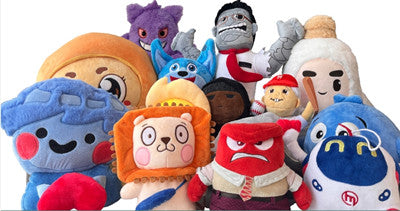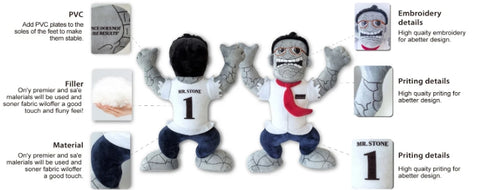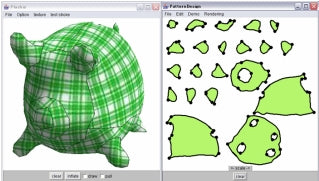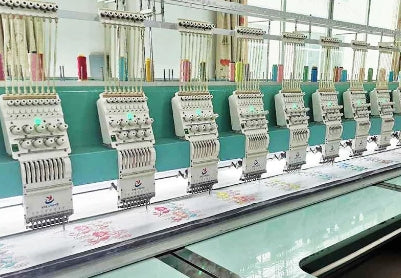The Revolutionary Role of Technologies in Designing Custom Plush Toys
The art of creating custom plush toys has embraced technology to elevate the process from traditional craftsmanship to a modern, innovative workflow. Today’s custom plush design adopting various advanced technologies to deliver precision, creativity, and efficiency.

Why Designing Custom Plush Toys Has Become Popular
- Personalized Gifts and Sentimental Value: Custom plush toys make unique and thoughtful gifts. They allow people to recreate cherished memories, design characters from beloved stories, or represent special moments. These toys hold sentimental value, often becoming keepsakes that carry emotional significance.
- Creative Freedom for Customers: Custom plush toy design gives customers the freedom to bring their creative visions to life. From selecting specific colors and materials to adding unique features, individuals can design toys that reflect their personality or imagination, making the experience fun and engaging.
- Connection to Favorite Characters or Mascots: Fans often want tangible representations of their favorite fictional characters, pets, or mascots. Custom plush toys fulfill this desire, allowing customers to own personalized versions of beloved figures, whether from pop culture, a sports team, or a personal creation.
- Branding and Promotional Use: Businesses increasingly use custom plush toys as promotional tools. Custom-designed plush mascots or branded toys help companies create a memorable connection with their audience. These items are popular for events, giveaways, or as merchandise, strengthening brand identity in a fun and approachable way.
- Demand for Unique and Limited-Edition Products: Consumers are drawn to items that stand out and feel exclusive. Custom plush toys satisfy this demand by offering one-of-a-kind designs that cannot be found in mass-produced options. Limited-edition runs or fully customized toys often create a sense of uniqueness and value.
- Emotional Comfort and Nostalgia: Plush toys are known for their comforting qualities, and custom designs add a layer of personal attachment. For many, designing a custom plush toy can evoke nostalgia or provide emotional comfort by bringing back memories of childhood toys or special moments.
- Social Media and Online Sharing: Social media has amplified the appeal of custom plush toys. Customers enjoy showcasing their unique designs online, inspiring others to create their own. Businesses also leverage social media to promote custom plush products, increasing awareness and demand.

Key Steps in Designing Custom Plush Toys
This streamlined process ensures high-quality, creative, and customized plush toys tailored to individual preferences.
| Step | Description |
| 1. Concept Development | Define the idea, character, or theme for the plush toy, including size and purpose. |
| 2. Sketching & Design | Create initial sketches or digital drawings to visualize the design concept. |
| 3. Material Selection | Choose fabrics, fillers, and accessories based on durability, texture, and aesthetics. |
| 4. 3D Modeling | Use CAD tools to create a detailed 3D model, refining the shape and proportions. |
| 5. Prototype Creation | Develop a physical prototype using 3D printing and sewing to test the design. |
| 6. Customer Feedback | Share the prototype or digital model with the customer for approval or revisions. |
| 7. Pattern Creation | Create fabric patterns based on the approved design for consistent manufacturing. |
| 8. Cutting & Sewing | Use laser cutting and automated sewing tools for precision and efficiency. |
| 9. Quality Control | Inspect the plush toy for consistency, durability, and adherence to the design. |
| 10. Final Production | Manufacture the plush toys in bulk or as per order specifications. |
| 11. Packaging & Delivery | Pack the finished toys attractively and ship them to the customer. |

Key Technologies in Designing Custom Plush Toys
1. 3D Modeling and CAD Design
Computer-Aided Design (CAD) software plays a pivotal role in custom plush toy design. Designers can create lifelike 3D models of the toy, complete with intricate details such as proportions, textures, and stitching patterns. CAD ensures that every design element aligns with customer specifications, and virtual prototypes allow for easy revisions before production begins.

2. AI-Powered Customization Platforms
AI-powered platforms simplify the design process for customers. These tools allow users to personalize features such as size, material, color, and additional elements while viewing the changes in real time. AI algorithms enhance usability by suggesting design improvements and ensuring the feasibility of production.
3. Laser Cutting Technology
Laser cutting is used to ensure that fabric pieces are cut with precision and consistency. This technology minimizes material waste and ensures that every piece perfectly matches the digital design, maintaining high standards of quality.
4. Automated Sewing Systems
Modern sewing machines equipped with automation capabilities stitch fabric pieces together efficiently. These systems deliver consistent results, reduce human error, and speed up the production process, particularly for complex or large-scale orders.

5. Digital Printing for Fabrics
Digital textile printing technology allows for high-resolution patterns, logos, or images to be directly applied to fabric. This method ensures vibrant and long-lasting designs, making it ideal for plush toys requiring detailed personalization or branding.

6. Augmented Reality (AR) Previews
Augmented reality tools provide customers with an interactive way to visualize their plush toy designs. With AR, users can view 3D models of their toys, rotate them, and inspect every detail before finalizing the order. This technology reduces uncertainty and enhances customer satisfaction.
7. Sustainable Materials and Practices
Technology has introduced eco-friendly materials like recycled polyester and biodegradable fibers, aligning with the increasing demand for sustainability. Modern custom plush manufacturing methods also focus on reducing energy consumption and waste, making custom plush toys environmentally responsible.
8. Robotic Quality Control
Automated quality control systems use advanced imaging and robotics to ensure plush toys meet exacting standards. These systems inspect stitching, fabric alignment, and overall durability, ensuring every product is safe and high-quality.

Conclusion
The integration of innovative technologies in designing custom plush toys has revolutionized the industry, making it possible to create highly personalized, high-quality, and sustainable products. From 3D modeling and laser cutting to AI-powered customization and AR visualization, these innovations streamline the process while enhancing creativity. As technology continues to advance, the custom plush toy market will only grow more dynamic and innovative, delivering designs tailored to every need.
